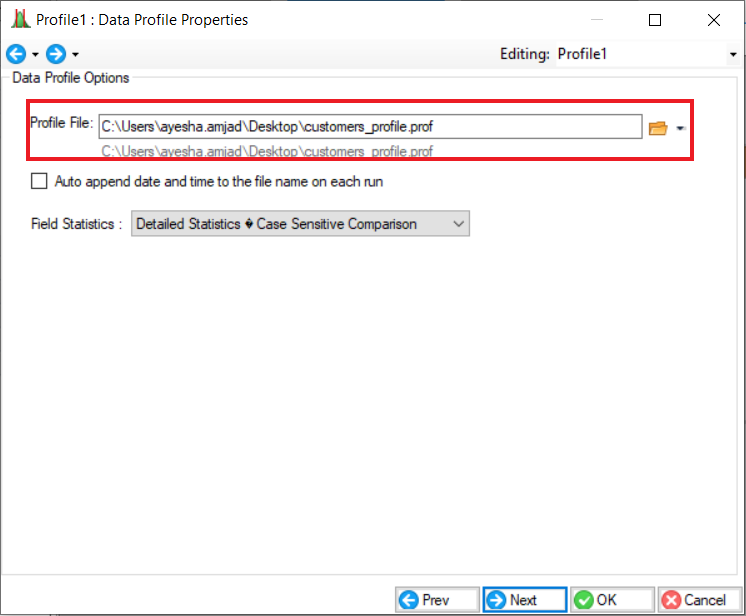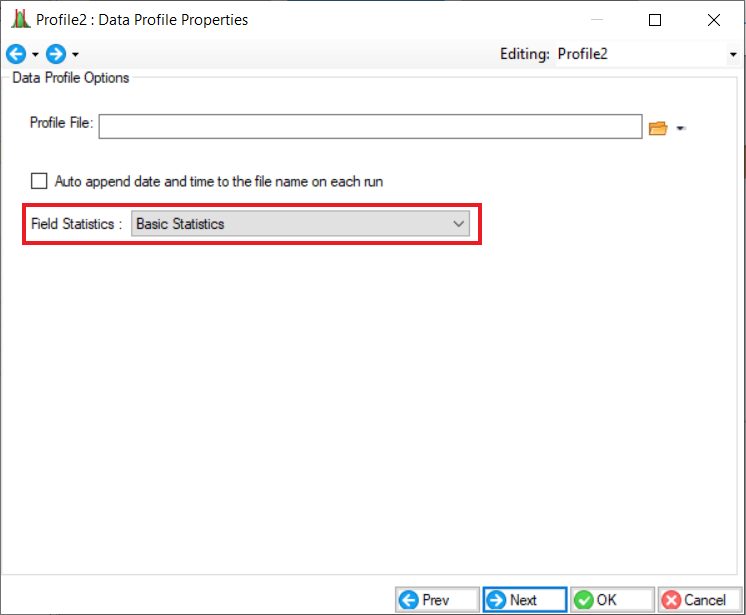Creating Data Profile¶
The Data Profile feature provides a complete data field statistic – basic and detailed – containing information such as the data type, minimum/maximum values, data count, error count etc. The statistics are collected for each of the selected fields at the time the dataflow runs.
In this document, we will learn how to create Data Profile in Astera Centerprise.
Using Data Profile¶
In this case, we have Customers data coming in from a Fixed Length File Source.
We want to collect statistics on these fields of data. For this purpose, we will use Data Profile feature of Centerprise.
1. To get a Data Profile object from the Toolbox, go to Toolbox > Data Profiling > Data Profile. If you’re unable to see the toolbox, go to View > Toolbox or press Ctrl + Alt + X.
2. Drag-and-drop the Data Profile object onto the dataflow designer.
You can see that the dragged Profile1 object is empty right now. This is because we haven’t mapped any fields on it yet.
3. Auto-map the fields from the source object onto the profile object.
Note: A Data Profile object is designed to capture statistics for an entire field layout. For this reason, it should be linked to the main Output port of the object whose field statistics you wish to collect.
Configuring the Data Profile Object¶
- To configure the Data Profile object, right-click on its header and select Properties from the context menu.
A configuration window will open. First screen is Layout Builder screen. This is where we can create or delete fields, change its name and data type.
2. Click Next. This is the Properties window.
3. Provide the File Path where Centerprise will store the profile.

4. Specify the type of Field Statistics to be collected.

Field Statistics dropdown allows you to select detail levels of statistic to collect. Select among the following detail levels:
- Basic Statistics: This is the default mode. It captures the most common statistical measures for the field’s data type.
- No Statistics: No statistics is captured by the Data Profile.
- Detailed Statistics – Case Sensitive Comparison: Additional statistical measures are captured by the Data Profile, for example Mean, Mode, Median etc, using case-sensitive comparison for strings.
- Detailed Statistics – Case Insensitive Comparison: Additional statistics are captured by the Data Profile, using case insensitive comparison for strings.
In this case, we are collecting a Detailed Statistics – Case Sensitive Comparison
Click OK.
Executing the Task¶
After configuring the settings for Data Profile object, click on Start Dataflow icon
from the toolbar at the top.
A Job Progress window will open at this instant and will show you the trace of the job.
2. Click on the Profile link provided in the Job Progress window and the profile will open on Centerprise. Expand the Profile node to see each field inside the object. Click on these fields to see the collected statistical values.